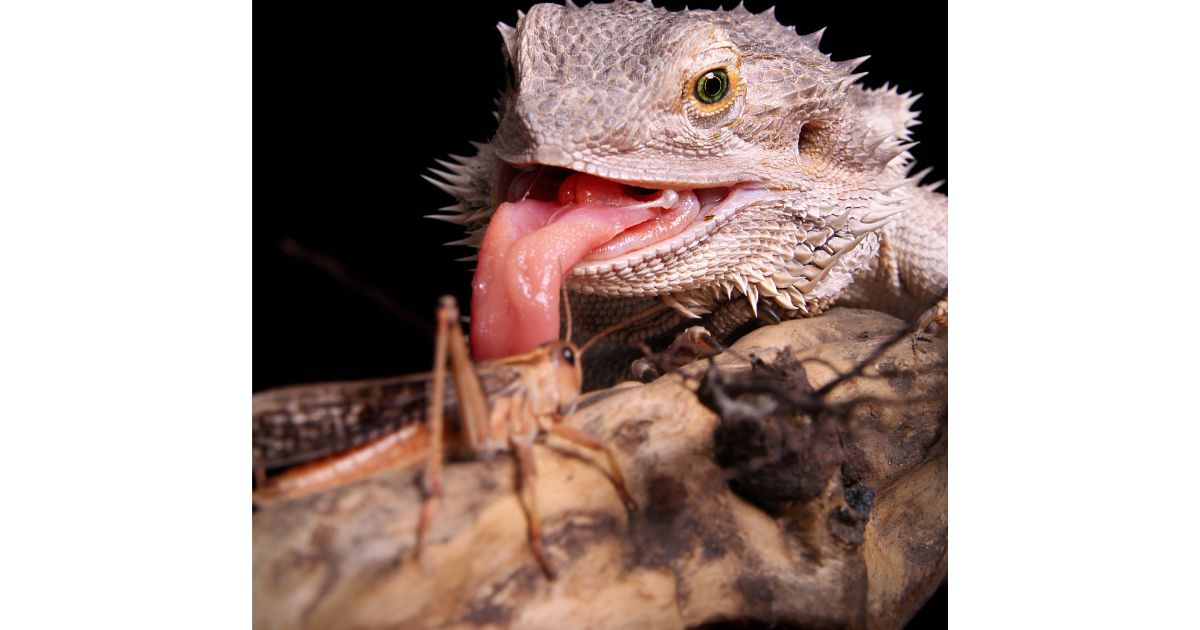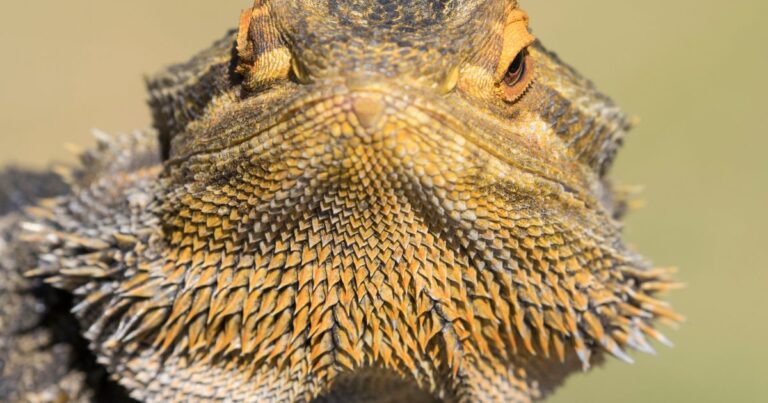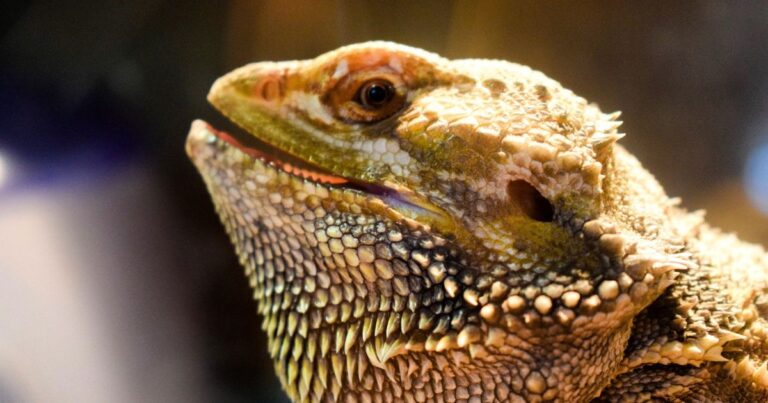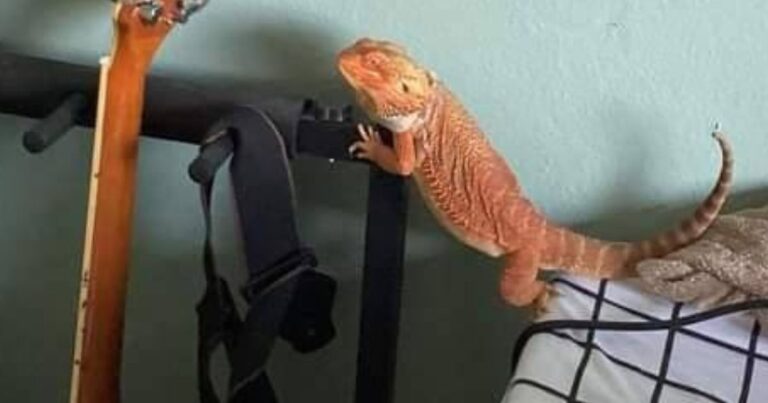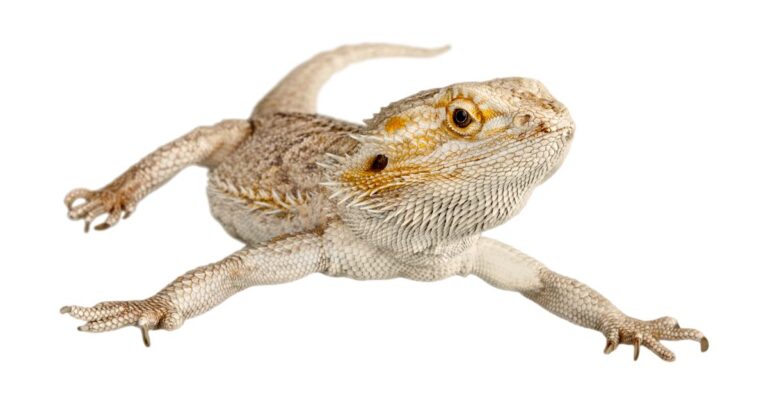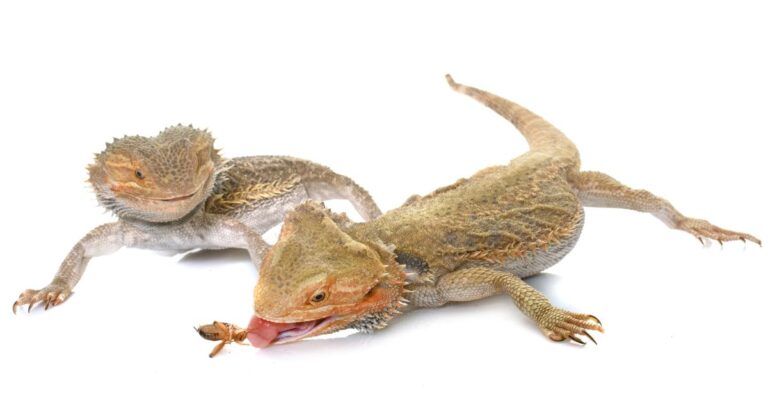Best live insects for bearded dragons
Table of Contents
Best live insects for bearded dragons? It’s a buffet of Dubia roaches, Goliath worms, waxworms, and more! Join me, Emily, as we dive into this crunchy, wriggly world. Trust me, it’s going to be a wild, wiggly ride!
Introduction
As a bearded dragon owner, one of the most important aspects of their care is their diet. Ensuring they get the right nutrients is crucial for their health and happiness. This guide will delve into the best live insects for bearded dragons, providing a comprehensive overview of each insect and its benefits. So, whether you’re a seasoned dragon parent or a new owner, this guide is for you!
Feeding your bearded dragon a balanced diet is not just about keeping them healthy – it’s about enriching their lives with variety and new experiences.
Importance of Feeder Insects in a Bearded Dragon’s Diet
Feeder insects are a staple in a bearded dragon’s diet. They provide essential nutrients like protein, fats, and vitamins that our scaly friends need to thrive. But not all insects are created equal. Some are more nutritious than others, and some are more suitable for bearded dragons of certain ages or health conditions.
When I first got Gilbert, I was a bit overwhelmed with all the information about bearded dragon care. I knew that feeder insects were important, but I wasn’t sure which ones were the best for him. One day, I decided to try feeding him mealworms. He seemed to enjoy them, but I noticed that he was having trouble digesting them. I did some research and found out that mealworms have a hard outer shell that can be difficult for bearded dragons to digest. That’s when I realized the importance of choosing the right insects for Gilbert. It’s not just about what he likes, but also what’s good for his health.
Understanding the nutritional value of each insect can help you create a balanced and diverse diet for your bearded dragon. Remember, variety is key! Just like us, bearded dragons enjoy a bit of change in their meals. Now, let’s dive into the world of feeder insects.
Nutritional Content of Feeder Insects
| Insect | Protein | Fat | Fiber | Moisture |
|---|---|---|---|---|
| Dubia Roaches | 23.4% | 7.2% | 2.9% | 61.2% |
| Goliath Worms | 9% | 3.07% | 1.02% | 85% |
| Waxworms | 15.5% | 22.2% | 7.7% | 62.6% |
| Superworms | 19.7% | 17.7% | 2.7% | 57.9% |
| Mealworms | 20.3% | 12.7% | 2.1% | 61.9% |
| Crickets | 21.3% | 6.6% | 3.2% | 69.2% |
| Black Soldier Fly Larvae | 17.5% | 14% | 3% | 61.2% |
| Butterworms | 16.2% | 29.4% | 1.3% | 62.1% |
| Silkworms | 9.3% | 1.1% | 1.3% | 76.2% |
Dubia Roaches
Dubia roaches are a protein-rich insect that are low in fat, making them a balanced nutrient source for our scaly friends. They’re easy to care for and breed, making them a practical choice for many bearded dragon owners.
Gilbert, my bearded dragon, absolutely loves them! I usually feed him a few roaches as part of his daily diet. They’re a great source of protein, which is essential for his growth and overall health. But remember, like all things, they should be fed in moderation.
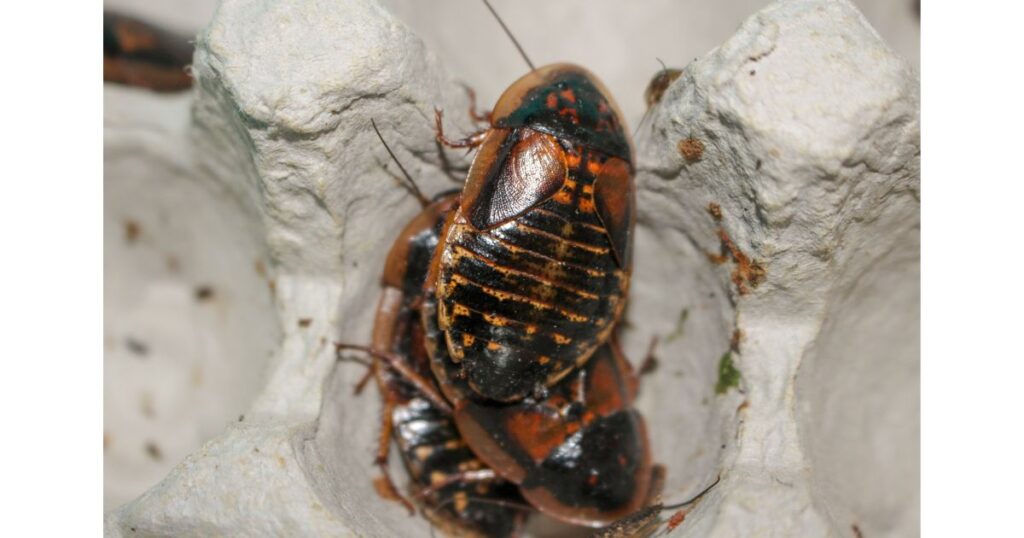
Goliath Worms
Also known as hornworms, Goliath worms are fast-growing insects that provide a hydration boost to our bearded dragons. They’re high in moisture content, which can help keep your dragon hydrated. However, due to their high growth rate, they can cause runny stools if fed in large quantities.
I usually give Gilbert a couple of these worms a week, especially during the hotter months when he needs extra hydration. He seems to enjoy the change, and it’s a great way to supplement his water intake.
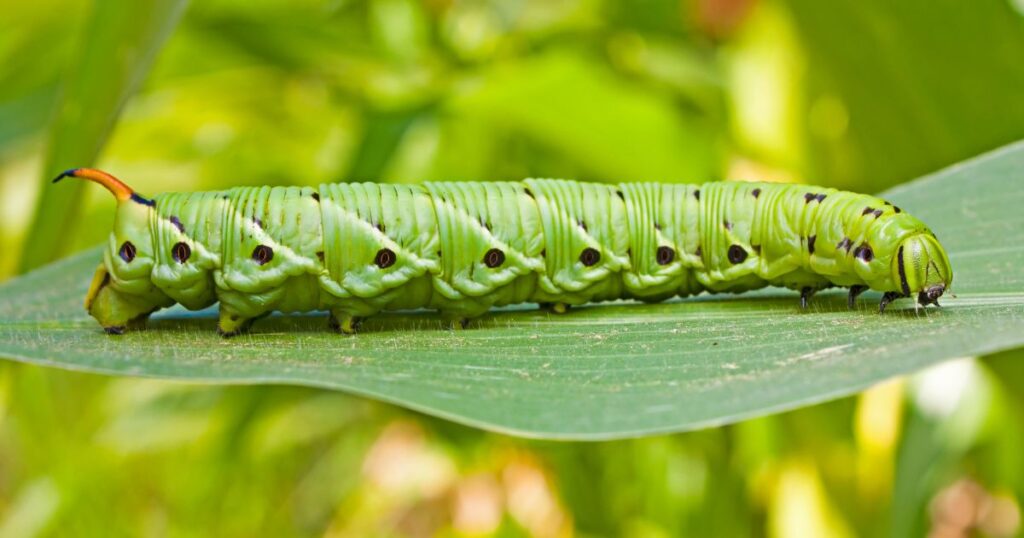
Feeding Frequency of Feeder Insects
| Insect | Frequency |
|---|---|
| Dubia Roaches | Daily |
| Goliath Worms | Weekly |
| Waxworms | Weekly |
| Superworms | Few times a week |
| Mealworms | Few times a week |
| Crickets | Daily |
| Black Soldier Fly Larvae | Daily |
| Butterworms | Weekly |
| Silkworms | Weekly |
Waxworms
While waxworms are high in fat, they can be a part of your dragon’s diet when given in moderation to manage their weight. They’re easy to store and can be a tasty treat for your dragon.
However, due to their high-fat content, they should not be the main staple of your dragon’s diet. Think of them as the equivalent of candy for your dragon – a treat to be given occasionally. Gilbert gets a few waxworms as a treat once a week, and he absolutely loves them!
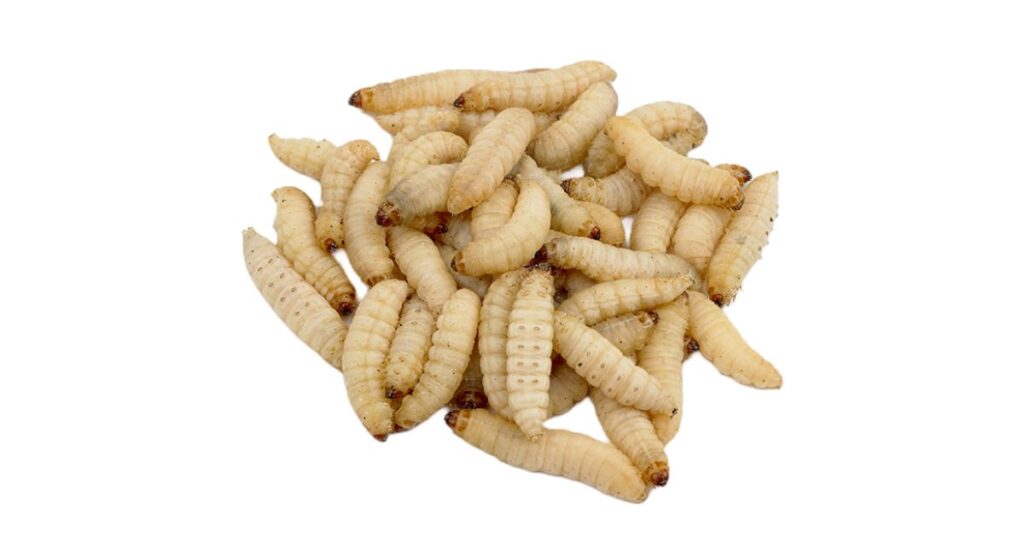
Superworms
Superworms are nutrient-rich worms with a high-fat content, but their chitin shell makes them a digestible insect for bearded dragons. They’re a good source of protein and can be a part of your dragon’s varied diet.
However, due to their size and hard outer shell, they’re more suitable for adult bearded dragons. I usually feed Gilbert superworms a few times a week, making sure to balance it with other insects and greens.
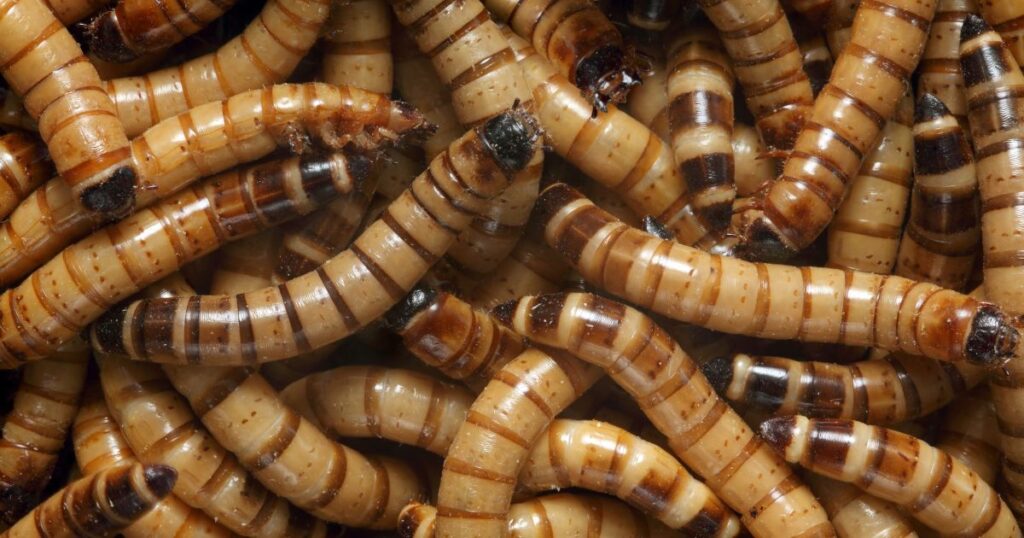
Suitable Age for Feeder Insects
| Insect | Suitable Age |
|---|---|
| Dubia Roaches | All ages |
| Goliath Worms | All ages |
| Waxworms | Adult |
| Superworms | Adult |
| Mealworms | Adult |
| Crickets | All ages |
| Black Soldier Fly Larvae | All ages |
| Butterworms | Adult |
| Silkworms | All ages |
Mealworms
Mealworms are a popular choice for many, but their hard outer layer requires us to feed them in limited quantities to avoid digestion issues. They’re a good source of protein but should be given as part of a varied diet.
Gilbert enjoys mealworms, but due to their hard shell, I make sure to feed them sparingly. It’s also important to choose mealworms that are an appropriate size for your dragon to prevent choking.
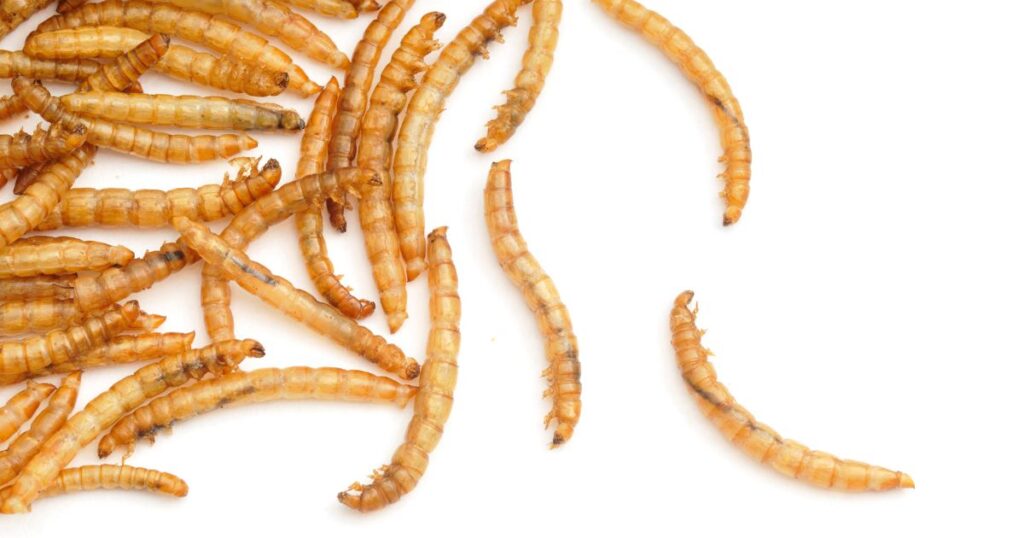
Crickets
Crickets are a popular feeder insect, providing a good source of protein and calcium, but it’s important to choose parasite-free options. They’re readily available and can be gut-loaded with nutritious food before feeding to your dragon.
Gilbert enjoys chasing crickets around his tank, so it’s not only a meal but also a great way for him to get some exercise. However, it’s important to remove any uneaten crickets as they can bite your dragon when left in the tank.

Pros and Cons of Feeder Insects
| Insect | Pros | Cons |
|---|---|---|
| Dubia Roaches | High in protein, low in fat | Can be expensive |
| Goliath Worms | High in moisture | Can cause runny stools |
| Waxworms | Tasty treat | High in fat |
| Superworms | Nutrient-rich | Hard outer shell |
| Mealworms | Good source of protein | Hard outer shell |
| Crickets | Good source of protein and calcium | Can carry parasites |
| Black Soldier Fly Larvae | High in calcium | Can be expensive |
| Butterworms | High in protein and calcium | High in fat |
| Silkworms | Easy to digest | Limited availability, low protein content |
Black Soldier Fly Larvae
Black Soldier Fly Larvae are a calcium-rich option that can be a great substitute for calcium supplements, especially for young dragons. They’re small and easy for young dragons to eat, making them a practical choice for many owners.
Gilbert enjoys these larvae, and I find them a convenient way to ensure he’s getting enough calcium in his diet. Plus, they’re easy to store and don’t require any additional care.

Butterworms
Butterworms, with their high protein and calcium content, are an appealing and nutrient-rich option for our bearded dragons. They’re a good size for bearded dragons and are easy to digest.
I occasionally feed Gilbert butterworms as a treat. He seems to enjoy the taste, and I appreciate the nutritional benefits they offer. However, like all feeder insects, they should be fed in moderation.
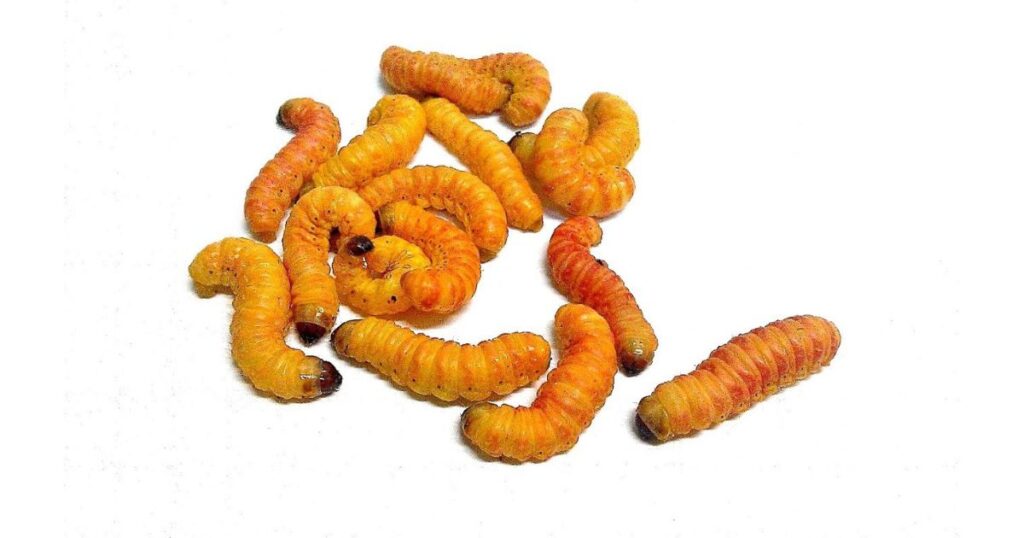
Storage of Feeder Insects
| Insect | Storage |
|---|---|
| Dubia Roaches | Dark, warm place |
| Goliath Worms | Refrigerator |
| Waxworms | Refrigerator |
| Superworms | Dark, warm place |
| Mealworms | Refrigerator |
| Crickets | Dark, warm place |
| Black Soldier Fly Larvae | Refrigerator |
| Butterworms | Refrigerator |
| Silkworms | Refrigerator |
Silkworms
Silkworms are soft-bodied feeders that are easy to digest, but their limited availability and low protein content make them an expensive choice. They’re a good source of moisture and can be a nice treat for your dragon.
I feed Gilbert silkworms occasionally as a special treat. He enjoys them, and I like knowing they’re a safe and digestible option. However, due to their cost and limited availability, they’re not a staple in his diet.
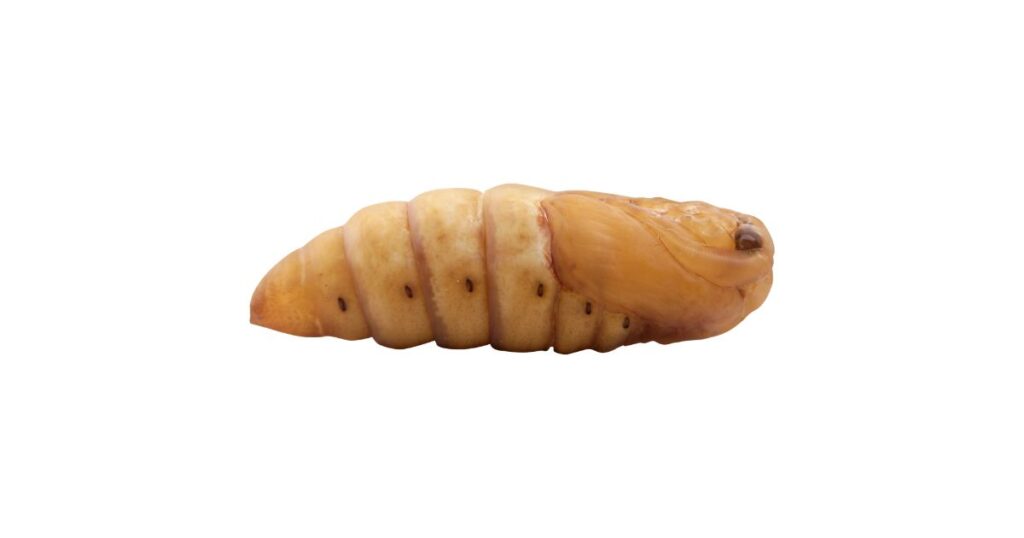
Every bearded dragon is unique, and what works for one may not work for another. The key is to observe, learn, and adapt to your dragon’s needs.
Conclusion
Choosing the right insects for our bearded dragons is a crucial part of their care, ensuring they get the nutrients they need for a healthy life. By offering a variety of insects, we can ensure a balanced diet that caters to their nutritional needs.
Remember, every dragon is unique, and what works for Gilbert might not work for your dragon. Always monitor your dragon’s health and adjust their diet as needed. And most importantly, enjoy the journey of discovering your dragon’s favorite foods!
If you want to learn more about bearded dragon care, check out the Bearded Dragon Care category. And don’t forget to check out my index page on Bearded Dragon Diet. Happy dragon parenting!
For those of you who are curious about other aspects of bearded dragon diet, you might find our previous posts Bearded Dragon nutritional deficiencies and Commercial diets and supplements for bearded dragons interesting.
Disclaimer: This guide is based on my personal experience and research. Always consult with a vet or a professional for your bearded dragon’s specific needs.
Frequently Asked Questions
What is the best live insect to feed a bearded dragon?
There isn’t a single “best” insect for bearded dragons as they require a varied diet. However, dubia roaches, crickets, and black soldier fly larvae are often recommended due to their high protein and calcium content.
What insect can I feed my bearded dragon daily?
Dubia roaches, crickets, and black soldier fly larvae can be fed daily. However, it’s important to provide a variety of insects to ensure a balanced diet.
Do you feed bearded dragons live insects?
Yes, live insects are a crucial part of a bearded dragon’s diet. They provide essential nutrients and stimulate the dragon’s hunting instincts.
How many live bugs should a bearded dragon eat?
The number varies based on the dragon’s age and size. Juveniles eat more insects than adults. A general rule is to allow your dragon to eat as many insects as it can in 10-15 minutes.
Do Beardies prefer crickets or mealworms?
This can vary from dragon to dragon. Some might prefer crickets, while others might prefer mealworms. It’s best to offer a variety and see what your dragon prefers.
Are mealworms better than crickets?
Both have their pros and cons. Mealworms are high in protein but have a hard outer shell that can be difficult for some dragons to digest. Crickets are also high in protein and are easier to digest, but they can carry parasites.
Can bearded dragons eat superworms every day?
Superworms can be part of a bearded dragon’s diet, but due to their high fat content, they should not be the main staple and should be fed in moderation.
Are superworms or mealworms better for bearded dragons?
Both superworms and mealworms have their benefits. Superworms are larger and have more fat, making them a good option for underweight dragons. Mealworms are smaller and easier for younger dragons to eat.
How many times a week should a bearded dragon eat bugs?
Juvenile bearded dragons should eat insects daily, while adults should eat insects every other day or so. The rest of their diet should consist of greens and vegetables.
Can Beardies eat mealworms everyday?
Mealworms can be a part of a bearded dragon’s diet, but due to their hard outer shell, they should be fed in moderation to avoid digestion issues.
Are superworms healthier than crickets?
Superworms and crickets both have their benefits. Superworms are high in fat and protein, while crickets are lower in fat but can carry parasites. It’s best to provide a variety of insects for a balanced diet.
Do bearded dragons get tired of crickets?
Bearded dragons can get bored with the same food, so it’s important to provide a variety of insects in their diet.
Can bearded dragons eat black soldier fly larvae?
Yes, black soldier fly larvae are a great source of calcium and can be a good addition to your bearded dragon’s diet.
Are waxworms good for bearded dragons?
Waxworms are high in fat and should be fed to your bearded dragon sparingly as a treat. They should not make up a large portion of their diet.
Can bearded dragons eat Goliath worms?
Yes, Goliath worms, also known as hornworms, can be fed to bearded dragons. They are high in moisture and can help keep your dragon hydrated.
Are butterworms suitable for bearded dragons?
Butterworms can be a part of your bearded dragon’s diet. They are high in protein and calcium but should be fed in moderation due to their fat content.
Can bearded dragons eat silkworms?
Yes, silkworms are a good source of moisture and can be a nice treat for your dragon. However, they are not as high in protein as some other insects.
How often should I feed my bearded dragon insects?
Juvenile bearded dragons should be fed insects 1-2 times a day, while adults should be fed insects every other day or so.
Can I feed my bearded dragon insects from my garden?
It’s not recommended to feed your bearded dragon insects from your garden as they may have been exposed to pesticides or could carry parasites.
Can bearded dragons eat dead insects?
While bearded dragons can eat dead insects, live insects are preferred as they stimulate the dragon’s hunting instincts and are generally healthier.
If you want to learn more about bearded dragon care, check out the Bearded Dragon Care category. And don’t forget to check out my index page on Bearded Dragon Diet. Happy dragon parenting!
Also check out the other pages in this category: Vegetables and greens for bearded dragons and Commercial diets and supplements for bearded dragons
